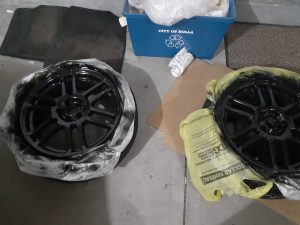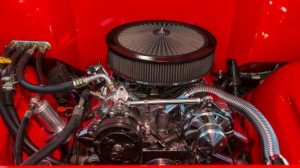
Dodge’s decision to discontinue the iconic HEMI engine has sent ripples through the automotive world, especially among muscle car enthusiasts who revere its power and heritage.
Short Summary:
- Historical significance of the HEMI engine
- Technological advancements and design features of the HEMI
- Reasons for discontinuation and industry implications
The HEMI engine, a cornerstone of Chrysler’s performance legacy, is facing discontinuation. This iconic powerplant, renowned for its hemispherical combustion chamber and unmatched power, has made headlines as Dodge plans to phase it out. Here’s an in-depth look into why this automotive legend is being shelved, its engineering marvels, and the future direction of Dodge’s performance engines.
Historical Significance of the HEMI Engine:
Chrysler introduced its first HEMI engine in the 1950s, initially billed as the FirePower engine (1951-58). Its unique hemispherical combustion chamber design provided better airflow and more efficient burning of the air-fuel mixture. The 426 HEMI, launched in the 1960s, became a legend on the racetracks, solidifying its place in motorsport history. NASCAR’s 1964 Daytona 500 saw the HEMI-powered cars dominate, including a famous victory by Richard Petty, leading to regulatory changes that required a street version of any engine used in racing.
“The 426 engine set the HEMI legend in stone when it won first, second and third place in the 1964 Daytona 500 NASCAR race. The 426 street HEMI came out in 1965, producing 425 horsepower.”
Technological Advancements and Design Features:
The HEMI’s hemispherical combustion chamber minimizes heat loss per unit of volume, thanks to its reduced surface area compared to traditional flat-head engines. It allows larger valves for better airflow and features such as dual spark plugs to improve combustion efficiency. Modern iterations include technologies like Variable Camshaft Timing (VCT), Multi-Displacement System (MDS) for cylinder deactivation, and active intake manifolds for optimized torque and horsepower.
Advantages:
- Efficient Combustion: The hemispherical chamber ensures better fuel burning.
- Thermal Efficiency: Less surface area in the chamber means less heat loss.
- Power and Torque: Known for delivering high horsepower and torque numbers.
Disadvantages:
- Complex and Costly: More intricate and expensive to manufacture.
- Heavy Components: Larger valves and combustion chambers increase engine weight.
- Emissions: Higher power output results in greater emissions and regulatory hurdles.
“In a HEMI engine, the surface area is much smaller than in a flat head, so less heat escapes and peak pressure can be higher.”
Reasons for Discontinuation:
Despite its revered status, the automotive landscape has evolved. Environmental regulations, fuel efficiency demands, and advancements in engine technology have led to Dodge’s decision to phase out the HEMI. Modern engines with more compact combustion chambers, efficient fuel consumption, and better emission controls have surpassed the capabilities of the HEMI design.
Furthermore, the shift towards electrification and hybrid powertrains is a significant factor. Automakers are investing heavily in electric vehicle technologies to meet future regulatory requirements and consumer preferences for environmentally friendly options.
Industry Implications:
The phase-out of the HEMI signals the end of an era for high-performance V8 engines. However, it opens the door for new powertrain innovations. Dodge and other manufacturers are likely to focus on developing advanced turbocharged engines, hybrid systems, and fully electric powertrains that can deliver similar or better performance characteristics while meeting stringent emission standards.
“The modern HEMI engines feature advancements like multi-displacement system (MDS) technology, which enhances fuel economy without sacrificing overall performance.”
Conclusion:
The HEMI engine’s discontinuation is a pivotal moment in automotive history. While it marks the end of a legendary chapter, it also heralds a future of innovative powertrain solutions. The legacy of the HEMI will continue to influence the muscle car culture and performance engineering for years to come.
The AutoPros.online team is dedicated to bringing you high quality automotive content for professionals and car enthusiasts, with topics like auto detailing, performance modifiations, repairs and automotive news.






